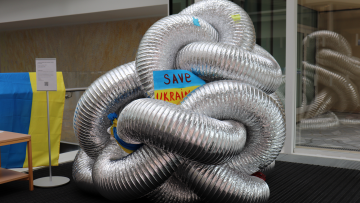12:00
Pushing Forward Rational Differential Forms
Note: we would recommend to join the meeting using the Zoom client for best user experience.
Abstract
The scattering equations connect two modern descriptions of scattering amplitudes: the CHY formalism and the framework of positive geometries. For theories in the CHY family whose S-matrix is captured by some positive geometry in the kinematic space, the corresponding canonical form can be obtained as the pushforward via the scattering equations of the canonical form of a positive geometry in the CHY moduli space. In this talk, I consider the general problem of pushing forward rational differential forms via the scattering equations. I will present some recent results (2206.14196) for achieving this without ever needing to explicitly solve any scattering equations. These results use techniques from computational algebraic geometry, and they extend the application of similar results for rational functions to rational differential forms.



